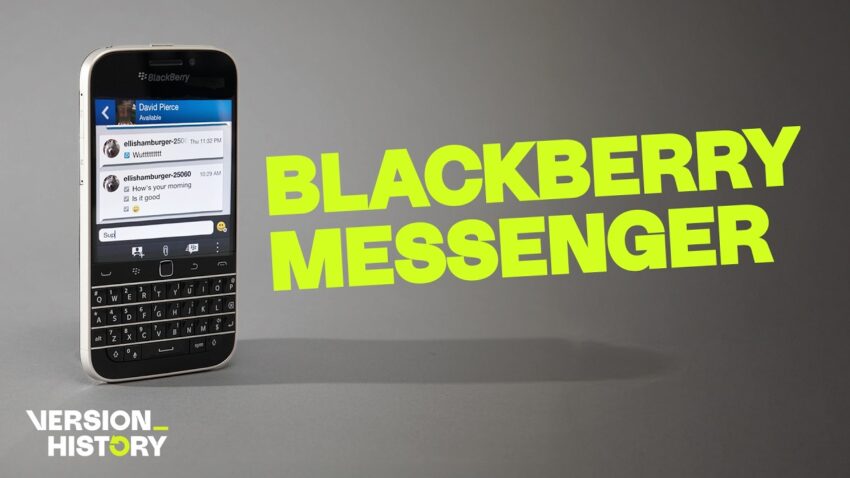
how blackberry messenger set texting free BlackBerry Messenger (BBM) revolutionized the way we communicate, paving the way for the modern messaging landscape we know today.
how blackberry messenger set texting free
The Text Messaging Landscape Before BBM
In the early 2000s, text messaging was a costly endeavor. Each text message sent could cost as much as 10 cents, leading to substantial monthly bills for users, particularly parents whose children had quickly mastered T9 typing. This era was characterized by a focus on voice minutes, with cell phone plans structured around how many minutes users could talk rather than how many messages they could send. The introduction of 3G networks brought faster data speeds, but the cost of texting remained a barrier for many.
Wireless carriers thrived on this model, generating significant revenue from text messaging services. As a result, texting was often viewed as a luxury rather than a standard form of communication. The high costs associated with sending messages meant that users were often cautious about how frequently they communicated via text. This environment created a demand for a more cost-effective solution.
The Rise of BlackBerry
During this time, BlackBerry was nearing the peak of its influence in the mobile phone market. The company was known for its secure email services and physical keyboards, which appealed to business professionals. However, BlackBerry recognized the growing demand for instant messaging and sought to capitalize on it.
In 2005, BlackBerry introduced BlackBerry Messenger, a service that allowed users to send messages to one another over the internet rather than through traditional SMS. This was a groundbreaking development that effectively cut the carriers out of the equation. Users could communicate freely without incurring the hefty fees associated with text messaging.
How BBM Worked
BBM utilized a unique PIN-based system, assigning each user a distinct PIN that they could share with others to connect. This system not only provided a level of privacy but also eliminated the need for phone numbers, which was particularly appealing to many users. The app allowed for real-time messaging, file sharing, and even group chats, features that were revolutionary at the time.
The introduction of BBM coincided with the rise of smartphones, making it accessible to a broader audience. As BlackBerry devices became increasingly popular, so did BBM. The app quickly gained a loyal user base, with millions of people using it daily to communicate with friends, family, and colleagues.
The Impact of BBM on Text Messaging
BBM’s launch marked a significant shift in the messaging landscape. It not only provided a free alternative to SMS but also set the stage for the development of other messaging platforms. Following the success of BBM, several other applications emerged, including WhatsApp, Telegram, and iMessage, each building on the foundation that BBM had established.
One of the most significant implications of BBM’s success was the gradual decline in the revenue generated by traditional SMS services. As users began to favor internet-based messaging apps, wireless carriers were forced to adapt to the changing landscape. Many carriers introduced unlimited texting plans and began to focus on data services, recognizing that the future of communication lay in internet-based messaging.
BBM’s Influence on Future Messaging Apps
BBM’s features and functionalities served as a blueprint for future messaging applications. The introduction of read receipts, typing indicators, and group chats became standard in many subsequent messaging platforms. These features enhanced the user experience, making communication more interactive and engaging.
Moreover, the concept of a secure messaging platform gained traction, with many users prioritizing privacy in their communication. BBM’s emphasis on security, particularly for business users, highlighted the importance of secure messaging, a trend that continues to influence messaging app development today.
The Decline of BBM
Despite its initial success, BBM faced challenges as the smartphone market evolved. The rise of competitors like WhatsApp and iMessage, which offered similar functionalities without the need for a specific device, contributed to BBM’s decline. As BlackBerry’s market share dwindled, so did the user base for BBM.
In 2013, BlackBerry announced that it would make BBM available on iOS and Android devices, a strategic move aimed at reclaiming market share. However, it was too late; users had already migrated to other platforms that offered more features and a broader user base. By 2019, BlackBerry officially discontinued BBM for consumers, marking the end of an era.
The Legacy of BBM
While BBM may no longer be in use, its legacy endures in the messaging applications we rely on today. The service played a crucial role in shaping the way we communicate, demonstrating the potential of internet-based messaging. It set the stage for the development of a wide range of messaging platforms that prioritize user experience, security, and accessibility.
Moreover, BBM’s impact on the telecommunications industry cannot be overstated. It forced wireless carriers to rethink their pricing models and adapt to a new reality where messaging was no longer a significant revenue stream. This shift has had lasting implications for how carriers structure their services today.
Stakeholder Reactions
The introduction of BBM was met with enthusiasm from users who appreciated the freedom it offered. Many praised the app for its ease of use and the ability to communicate without worrying about costs. However, wireless carriers were less enthusiastic, as they faced declining revenues from text messaging services. This tension between users seeking affordable communication options and carriers trying to maintain profitability highlighted the evolving dynamics of the telecommunications industry.
Conclusion
BlackBerry Messenger was more than just a messaging app; it was a catalyst for change in the way we communicate. By eliminating the costs associated with traditional SMS, BBM set the stage for a new era of messaging that prioritized accessibility and user experience. While the app may no longer be in use, its influence is felt in the messaging platforms we rely on today. As we continue to navigate the ever-evolving landscape of communication technology, we owe a debt of gratitude to BBM for paving the way.
Source: Original report
Was this helpful?
Last Modified: October 13, 2025 at 1:40 am
0 views















